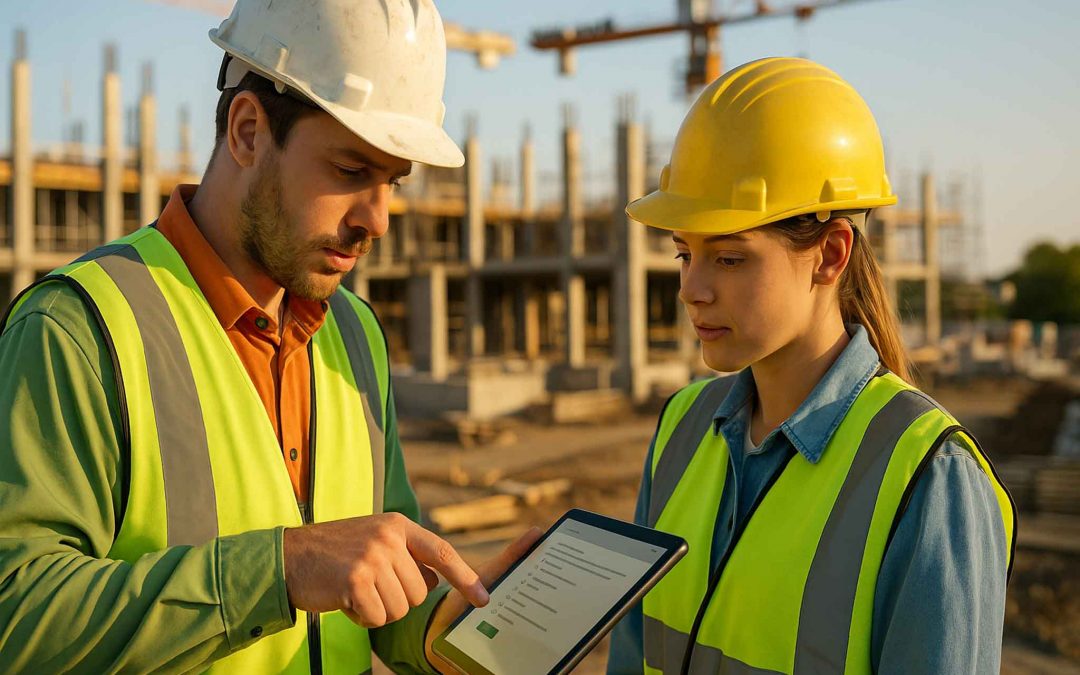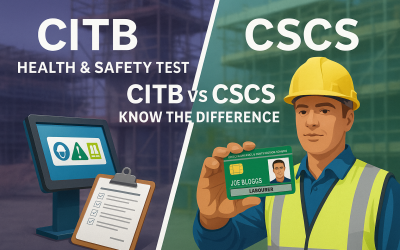Test Yourself: 20 Common CITB Test Questions (Answered)
Are you gearing up for the CITB Health, Safety & Environment (HS&E) test? This quiz-style guide gives you 20 common CITB test questions that regularly trip up candidates. Answer each multiple‑choice question, hit “Check My Score”, and instantly reveal the correct answers with explanations. By the end, you’ll know exactly where you stand—and how to close any knowledge gaps before test day.
What Is the CITB HS&E Test?
The CITB Health, Safety & Environment test—often called the CSCS test—is a computer‑based assessment that proves you understand key construction site safety principles. Passing it is a prerequisite for most CSCS cards. You’ll face 50 multiple‑choice questions in 45 minutes covering:
- General safety, health & environmental awareness
- Working at height & manual handling
- Fire prevention and emergency procedures
- Occupational health (noise, dust, hazardous substances)
- Legal duties and best practice for everyone on site
According to the CITB 2024 annual review, more than 650,000 HS&E tests were taken last year—up 8 % year‑on‑year, reflecting sustained growth in UK construction. Passing first time saves retest fees and speeds up card applications.
How This Mock Quiz Works
You’ll see 20 sample questions below. Select A, B, C or D for each one, then click Check My Score. The page reveals:
- Whether you were right or wrong
- The correct answer
- A concise explanation pulled from the official CITB revision book
This mini mock follows the real exam’s style. Use it alongside other resources such as CSCS practice exams and HS&E revision apps.
20 Common CITB Test Questions
Choose your answers, then scroll to the bottom and click “Check My Score”.
Answers & Explanations
Prefer reading rather than interactive? Expand the answers below.
Show All Explanations
- CO2 extinguishers contain non‑conductive gas, making them safe for energized electrical equipment.
- PPE is effective only when intact and correctly fitted; damaged gear must be replaced immediately.
- The HSE GS6 guide recommends staying 3 m below 11 kV lines to avoid arcing.
- Blue signs denote mandatory actions such as “Wear safety helmet”.
- Combining plugs and earmuffs provides the highest SNR, often exceeding 35 dB.
- Site inductions tailor generic safety law to specific hazards, locations and emergency procedures you’ll face.
- Place the casualty in the recovery position to maintain their airway while help arrives.
- A lifting plan sets load weight, radius, sling angle and exclusion zones for safe crane work.
- Breathing respirable crystalline silica can scar lung tissue, causing silicosis.
- Damaged ladders fail the Workplace (Health, Safety & Welfare) Regulations; quarantine and report them.
- A quick visual check by users before each use picks up obvious cable or casing damage on power tools.
- A bump cap is designed for low‑risk overhead bumps, not impact from falling objects.
- Water mist suppresses dust at source and is the preferred engineering control.
- The employer/duty‑holder must organise six‑monthly thorough examinations under LOLER.
- HAVS damages blood vessels and nerves in fingers and hands, leading to numbness and pain.
- Red‑and‑white tape signals no entry—usually around excavations or drop zones.
- Store flammables in a fire‑resistant cabinet with ventilation and signage to BS EN 14470‑1.
- LOLER 1998 legally controls lifting equipment and operations in the UK.
- The control hierarchy starts with eliminating the hazard altogether.
- CDM welfare checks make sure minimum facilities (sanitary, rest, drinking water) are provided for all workers.
Top Revision Tips
Use these pointers to maximise your first‑time pass rate:
- Complete at least three CSCS mock tests under timed conditions.
- Download the CITB HS&E app for mobile practice on breaks.
- Create flashcards of tricky regulations: CDM 2015, LOLER 1998, RIDDOR 2013.
- Watch quick‑fire video explainers (see below) to reinforce learning visually.
For an in‑depth guide, read our CITB revision guide. You’ll learn memory techniques, exam logistics and last‑minute checklists.
Ready to Book Your Test?
Don’t leave your CSCS card to chance. Book your CITB HS&E test with us today. We offer walk‑in slots, revision materials and unbeatable customer support.
Call us: 0161 321 2123 | Email: info@citbtestcentre.co.uk
Frequently Asked Questions
How many questions are in the real CITB HS&E test?
Is this mock test up to date for 2025?
Can I take the HS&E test online?
What ID do I need on the day?
Latest New & Updates
Special Assistance Options for the CITB Test
Discover every special assistance option for the CITB test—from language voice‑overs to extra time—so you can sit the exam with confidence and fairness.
CITB vs CSCS – What’s the Difference?
Confused about the CITB test and CSCS card? Learn the vital difference and the exact steps to secure your CSCS card first time.
Tips for Taking the Managers & Professionals CITB Test
Discover expert tips for taking the Managers & Professionals CITB Test and secure your CSCS card first time. Study smarter and beat the 90 % pass mark.




